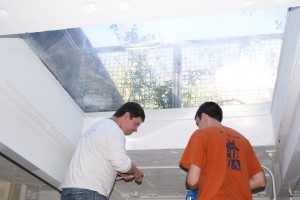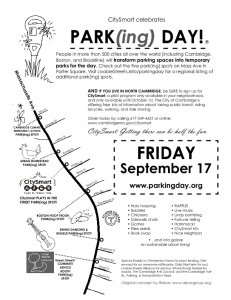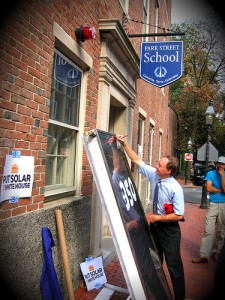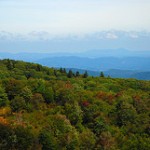On Tuesday, I shared my conversation with Randi Mail, recycling director for the City of Cambridge, about Cambridge’s new single-stream recycling program. In the process we touched on some general waste and recycling questions that I thought I’d share here. If you have any other questions or want to attend the recycling facility tour, let me know in the comments and I’ll pass it on to Randi.
Are there any plans for collecting compost in the future?
The limiting factor on that right now is that there is no facility within reasonable driving distance of the city that can handle the kind of volume of food scraps that we’d get if we had a curbside collection program for residents. There are a few private companies that are moving forward with plans to build new facilities for the Boston area, so that needs to come first. We need a facility that can process yard waste and food waste together, similar to the way that the San Francisco and the Seattle programs work. The programs in place for businesses and for the drop-off program, that food waste is being taken to farms that are basically at capacity. They can’t handle the kind of volume that we’d get with the curbside program.
What farms are they being taken to right now?
There’s Rocky Hill Farm in Saugus and Brick-Ends Farm in Hamilton. They’re large-scale facilities, but they’re small when we’re talking about providing collection to everybody in Cambridge. I’ve estimated that we’d see at least 3,000 tons a year; it could be three times that. The food waste drop-off program is basically 50 tons a year—we’d be doing about 50 tons a week.
The farms are doing outdoor composting in windrows, long piles they turn every day. It would be impossible, I think, to site an outdoor composting facility in the Boston area. You’ve got neighbors and odor concerns. So the companies are looking at this technology called anaerobic digestion, where you can do composting indoors in an environment where there’s no oxygen, and they can capture the methane that is emitted during that composting for electricity or fuel. The city of Toronto has a few of these, and it’s very popular in Europe in urban areas.
The city is watching what the private sector is exploring. Casella Recycling, is looking at anaerobic digestion, as well as Save That Stuff, a local hauler. There are a few other projects that are being considered.
I think within the next two to three years we’ll be in a better position to consider curbside organics collection. We’ve had the drop-off program for residents for two years, and businesses have had the curbside organics for four years. We get a lot of questions about this, and I hope we will be in a position to offer it.
The best option, of course, is to try to compost at home. If you have backyard space, DPW sells compost bins for $50. Apartment dwellers can compost indoors with a worm bin.
If you’re not sure whether something is recyclable in your town, is it better to toss it in the bin for them to sort at the center or should you just not include it?
Well, the top items that are not accepted are food, plastic bags, Styrofoam, VCR tapes, liquids, and light bulbs. We don’t take glass dishes or cups, and no plate glass, like picture frames or windows, which can be leaded glass. Currently no pizza boxes, but the new program is going to accept empty pizza boxes. Other than those items, we do accept a lot of materials: all paper, all plastics, glass bottles, metal can, and cardboard. With the new program, any stiff plastic will be accepted, even if it doesn’t have a number on it.
Ultimately, if you’re not sure, I’d say, “When in doubt, throw it out.” But call or visit the website and check. The big no-nos are plastic bags and food waste.
Anything else about the program that you want to share?
I’d love to get the word out about the recycling tours. We’ve got one a month: September 29, October 28, and November 18. They’re open to the public, and it’s a really great way for people to see the recycling process in action and feel confident that what they’re putting in their bin is really getting sorted and sent to companies to be made into new products. Recycling is real, and it’s an important industry in our economy. We have a six-minute video on our website of the recycling processes in Charlestown, so if you can’t make the tour, you can also watch that. To sign up, e-mail recycle@cambridgema.gov or call 617-349-4815.
Cross-posted on pragmaticenvironmentalism.com As recently reported by GreenBiz, Boston and Hartford have been chosen by the Environmental Protection Agency (EPA) as two of the five cities that will partake in the Greening America’s Capitals program. This is great news as it means a team of EPA backed designers will visit each city and will create and design plans that promote smart growth and will help ensure the future sustainability for both capitals.
As recently reported by GreenBiz, Boston and Hartford have been chosen by the Environmental Protection Agency (EPA) as two of the five cities that will partake in the Greening America’s Capitals program. This is great news as it means a team of EPA backed designers will visit each city and will create and design plans that promote smart growth and will help ensure the future sustainability for both capitals.



 Beginning September 7th,
Beginning September 7th, 

